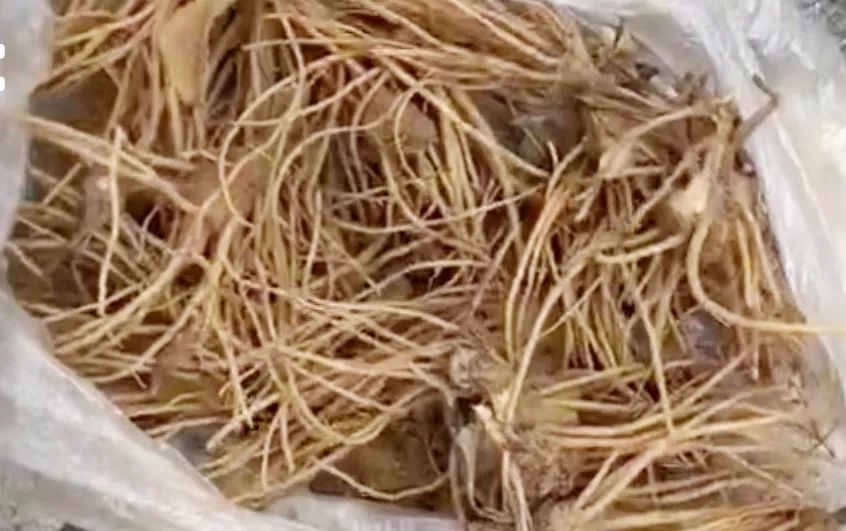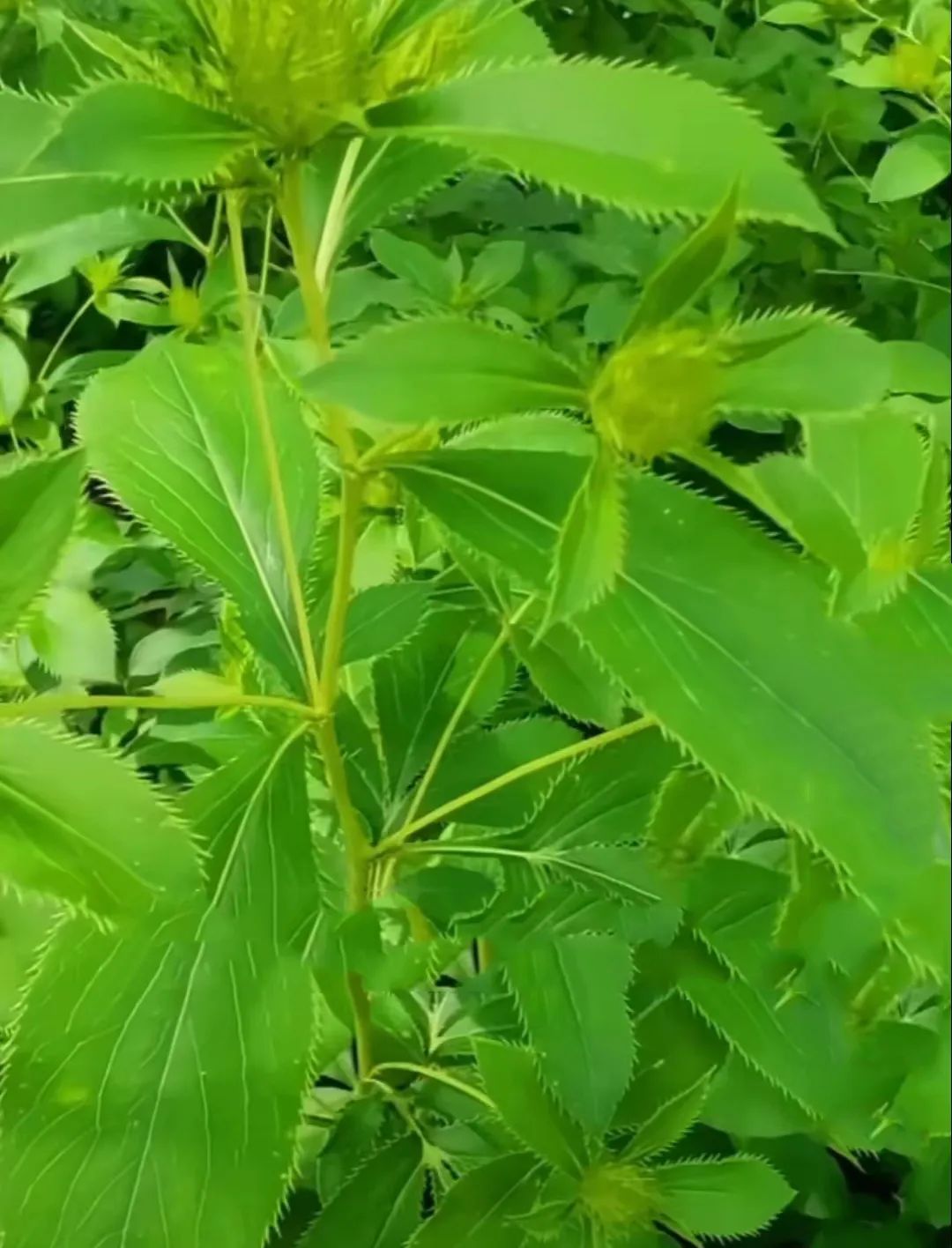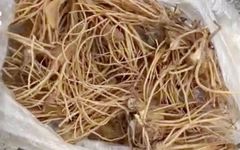

The medicinal herb Cang Zhu (Atractylodes) refers to the dried rhizome of the plants Atractylodes lancea or Atractylodes macrocephala, both belonging to the Asteraceae family. Atractylodes macrocephala, also known as Qiang Tou Cai or Hua Cang Zhu, contains volatile oils, with the main active components being Cang Zhu Su (Atractylon), Mao Zhu Chun (Atractylodes alcohol), β-Eucalyptol, Olibanum alcohol, Cang Zhu Ketone, 3-β-Hydroxy Atractylon, and Cang Zhu Su alcohol.

Properties and Channels:
Cang Zhu has a pungent and bitter taste, and is warm in nature. It enters the Spleen, Stomach, and Liver meridians.
Functions and Indications:
It dries dampness, strengthens the Spleen, dispels wind and cold, and improves vision.
Clinical Applications:
It is primarily used for damp obstruction of the Spleen and Stomach, loss of appetite, indigestion, cold damp vomiting and diarrhea, abdominal distension, wind-cold-damp bi syndrome, and edema.
Dosage:
Decoction, 3-9g.
Precautions:
1. Contraindicated in cases of Yin deficiency with internal heat, bleeding, or excessive sweating due to Qi deficiency.
2. Cang Zhu should not be used with coriander or garlic; do not combine these when taking Cang Zhu.
3. It is advisable to avoid strong tea and to maintain a light diet while taking the medication.


Atractylodes macrocephala is mainly distributed in the three northeastern provinces of China, with wild resources also found in Hebei, Shandong, Inner Mongolia, Ningxia, and Gansu.
Currently, there are small-scale cultivated areas in northern Jilin and Hebei, but the planting area has not yet formed a scale effect. Research on the growth and development requirements of Atractylodes macrocephala and artificial cultivation techniques to improve yield and stabilize quality will be the main direction of future cultivation research.

Atractylodes macrocephala is a perennial herb, growing to a height of 40-50 cm. The rhizome is thickened and nodular. The stem is single or slightly branched at the top. The leaves are alternate, with the lower leaves being spoon-shaped, having winged petioles at the base, and the base being wedge-shaped to round, with discontinuous spiny teeth along the edges. The leaves are leathery and smooth. The head-like flower clusters grow at the top of the stem, with leaf-like bracts at the base that are lanceolate and have long serrated edges, shorter than the flower heads. The involucre is cup-shaped, with 7-8 rows of bracts, covered with fine hairs, and the tubular flowers have white corollas. The achenes are elongated, densely covered with silvery-white soft hairs, and the pappus is feathery. The flowering period is from July to August, and the fruiting period is from August to October.


Temperature and Light Requirements:
Atractylodes macrocephala grows in the understory of low mountain slopes, in shrubbery or grass. It prefers a cool climate with significant day-night temperature differences and ample sunlight, with the optimal growth temperature being 15-22°C. It is cold-resistant and has strong vitality.
Soil Requirements:
It is not strict about soil requirements and can grow in barren mountains, slopes, and poor soil, but it grows best in loose, fertile, and well-drained soil; low-lying areas are not suitable for planting.

 The physiological characteristics of the seeds are that they are short-lived; stored at room temperature, they last only 6 months, and seeds from the following year cannot be used. Low-temperature storage can extend the seed lifespan; under low-temperature conditions of 0-4°C, seeds can be stored for 1 year, maintaining a germination rate of over 80%. The seeds of Atractylodes macrocephala are of the low-temperature germination type, with a minimum germination temperature of 5-8°C and an optimal temperature of 10-15°C. Germination is inhibited above 25°C, and seeds almost entirely rot above 45°C. When the seeds germinate, they produce two true leaves, and the hypocotyl swells, gradually forming the rhizome. As the plant grows, the number and size of leaves increase. Before wilting, the 1-year-old seedlings are rosette-shaped, with a fresh weight of 3-6g; the 2-year-old plants begin to form aerial stems, with the rhizome being flat and round, measuring 2-2.8cm in length, and producing 1-5 renewal buds, with a fresh weight of 10-15g; the 3-year-old plants begin to bolt and flower, with the rhizome thickening and weighing about 25g. Seeds can be harvested for medicinal use after 3-4 years of growth.
The physiological characteristics of the seeds are that they are short-lived; stored at room temperature, they last only 6 months, and seeds from the following year cannot be used. Low-temperature storage can extend the seed lifespan; under low-temperature conditions of 0-4°C, seeds can be stored for 1 year, maintaining a germination rate of over 80%. The seeds of Atractylodes macrocephala are of the low-temperature germination type, with a minimum germination temperature of 5-8°C and an optimal temperature of 10-15°C. Germination is inhibited above 25°C, and seeds almost entirely rot above 45°C. When the seeds germinate, they produce two true leaves, and the hypocotyl swells, gradually forming the rhizome. As the plant grows, the number and size of leaves increase. Before wilting, the 1-year-old seedlings are rosette-shaped, with a fresh weight of 3-6g; the 2-year-old plants begin to form aerial stems, with the rhizome being flat and round, measuring 2-2.8cm in length, and producing 1-5 renewal buds, with a fresh weight of 10-15g; the 3-year-old plants begin to bolt and flower, with the rhizome thickening and weighing about 25g. Seeds can be harvested for medicinal use after 3-4 years of growth.


